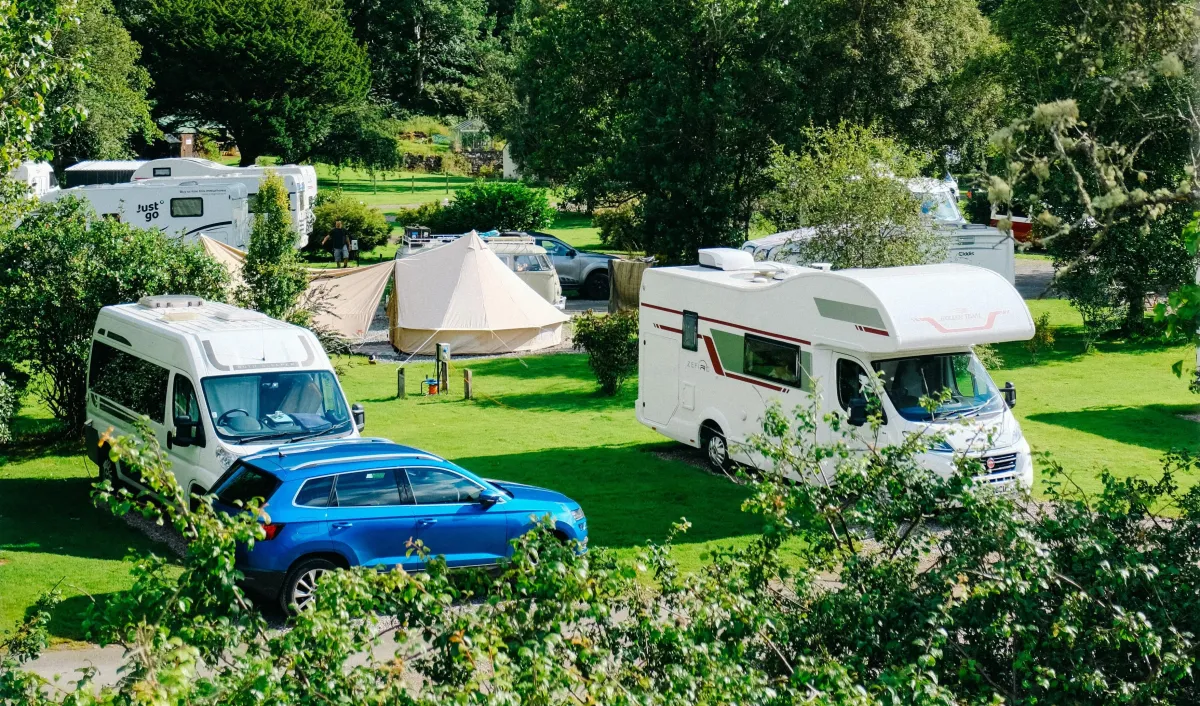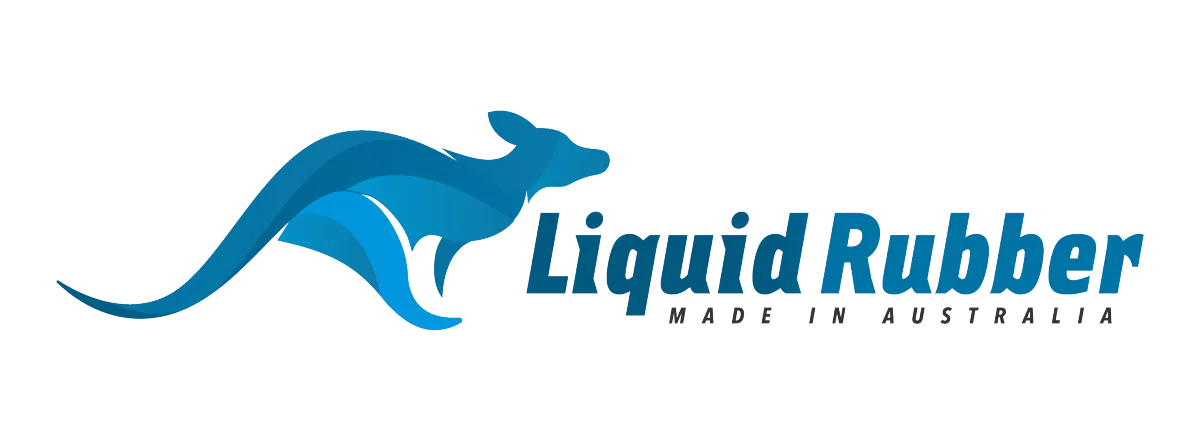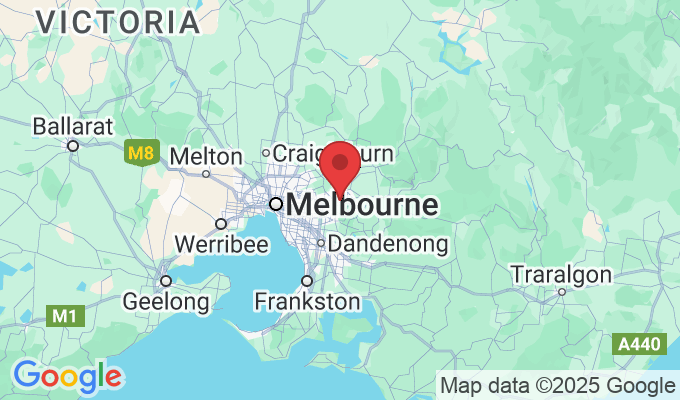Liquid Rubber: Superior Caravan Sealant for Australian Adventures
Transform Your Caravan with Our Advanced Waterproofing Solution
Liquid Rubber is your go-to solution for protecting caravan roofs against the harsh Australian climate. Specially formulated to provide durable, long-lasting protection, Liquid Rubber is much more than a quick fix; it's a comprehensive solution for your caravan's waterproofing needs.
UV Resistance and Flexibility: Specially designed to withstand Australia's intense UV rays, Liquid Rubber maintains its integrity over time. Its flexibility is key to adapting to the changing temperatures and movements experienced during your travels.
Compatibility with Various Materials: Whether your caravan has a metal, fiberglass, or rubberized roof (including EPDM or TPO), Liquid Rubber ensures strong adherence and optimal waterproofing.
DIY Friendly Application: Save on costly professional repairs with our easy-to-apply rubber paint. It's the professional choice now made available for every caravan enthusiast.
Liquid Rubber - Tailored for the Australian Environment
Proudly manufactured in Australia, Liquid Rubber represents a commitment to local quality and reliability. It's a product designed for Australian caravans and the unique conditions they face.
Comprehensive DIY Waterproofing: An ideal solution for those who prefer the DIY approach, providing an easy, no-fuss application with long-lasting results.
Effective for Roof Leaks and Repairs: Specifically formulated to tackle common issues like roof leaks, Liquid Rubber seals and protects against further interior damage.
Suitable for Pop Top Caravans: Enhance the waterproofing of retractable roofs, ensuring they remain leak-free and functional.
Trailers and Camper Trailers Protection: Extend the life of your trailer or camper trailer with our robust waterproofing solution.
Suitable for Various Caravan Brands
Liquid Rubber is not just a sealant; it's a versatile solution designed to cater to a wide array of caravan brands and models. Its compatibility extends to some of the most popular and trusted names in the industry, ensuring that no matter your choice of caravan, Liquid Rubber can provide the protection it needs.
Compatible with popular models from Winnebago, Jayco, Lotus, and many others, Liquid Rubber provides the assurance of protection and longevity.
Versatile Protection for All External Features
Liquid Rubber's utility extends far beyond the caravan roof. It is an all-encompassing solution for various external components of caravans and motorhomes, providing a reliable barrier against the elements.
Skylight Sealing: Skylights are vulnerable to leaks, but with Liquid Rubber, they can be effectively sealed to prevent water ingress, ensuring continued enjoyment of natural light without the worry of leaks.
Air Conditioner Protection: The seal around air conditioning units is critical. Liquid Rubber ensures that these units are well-sealed, safeguarding against water damage and maintaining interior comfort.
Solar Panel Edges: For caravans equipped with solar panels, Liquid Rubber offers an excellent way to seal and protect the edges and mounting points of the panels, ensuring their efficiency and longevity.
Sealing Around Hatches and Vents: All hatches, vents, and other protrusions on the caravan's exterior can be effectively sealed with Liquid Rubber, preventing potential leak points and ensuring a watertight exterior.
Comprehensive Caravan Protection: From the front bumper to the rear, including window seals, door edges, and even undercarriage components, Liquid Rubber can be applied to ensure total protection from water ingress and environmental damage.
Australian Made Waterproof Membrane for Quality & Safety
Choosing Liquid Rubber means investing in a product that is:
Environmentally Conscious: Our products are VOC-free, contributing to a healthier environment both during and after liquid rubber application.
Proudly Australian: We manufacture our products locally, supporting the Australian economy and adhering to strict quality control measures.
Quality Assured: Our commitment to quality is backed by our ISO 9001 certification, reassuring our customers of the reliability and durability of our products.
Step-By-Step Application Guide
Thorough Cleaning: Start with a comprehensive wash or water-blast of the surface to ensure optimal adhesion.
Drying Process: Use a leaf blower to remove all excess water for a completely dry surface.
Geo-Textile Preparation: Pre-cut Geo-Textile for bridging seams, joints, and holes, ensuring a snug fit.
Initial Sealant Layer: Apply the Liquid Rubber Sealant. Embed the Geo-Textile smoothly to avoid air pockets or wrinkles.
Addressing Rust and Hatches: Apply sealant to any rust spots and around hatches for complete coverage.
First Sealant Application: Use a brush, roller, or spray machine to evenly apply Liquid Rubber Sealant over the desired area.
Quick-Drying Option: Employ Rapid Cure Spray for faster drying, especially useful in unpredictable weather (optional).
Second Coating: Apply a second layer of Liquid Rubber Sealant for reinforced protection.
Thickness for Optimal Protection: Target a 1.5mm dry-film thickness for robust waterproofing.
Adequate Curing Time: Allow at least 24 hours per 1mm thickness for curing; longer in colder climates.
Post-Curing Cleaning: Wash the surface post-curing to ensure it's free from debris or dirt.
Primer Application: Apply Sealer (for previously painted surfaces) or Etch Primer (for raw metal) as necessary.
Thermal Coating for Final Protection: Apply Thermal Coating over the sealant or primed metal surface for ultimate weather resistance.
Learn more about using Liquid Rubber.

Most Effective Way to Waterproof Your Caravan: Liquid Rubber Sealant
Exploring the open roads of Australia in your caravan or camper offers unmatched freedom, but this adventure comes with its fair share of upkeep.
A leaky caravan roof can quickly dampen your spirits, so staying ahead of potential issues is essential.
With liquid rubber sealant, you can protect your caravan roof from leaks and ensure your it remains road-ready. Here’s a step-by-step guide to waterproofing your caravan roof like a pro.

Step 1: Locate the Leak in Your Caravan Roof
The first step in addressing a leak is finding the root cause. While leaky windows are often obvious, roof leaks tend to be trickier, with water traveling before it becomes visible inside your caravan.
Inspect common problem areas such as seams, joins, and screw holes. A methodical approach works best: remove valuables, climb onto the roof, and gently spray water to trace the leak.
Enlist a friend to observe from the inside and identify the precise location of the drip.
Step 2: Select the Best Waterproofing Solution: Liquid Rubber
Choosing the right sealant is key to a durable repair. Here’s a quick rundown of popular options:
Butyl Mastic Sealants: Suitable for temporary fixes but not ideal for long-term durability.
Silicone Sealants: Widely used for their strength and flexibility. Use acetic cure silicone for interior applications and neutral cure silicone for exterior use to prevent corrosion on aluminium caravan bodies.
Polyurethane (PU) Sealants: Known for their resilience, PU sealants are UV-resistant, paintable, and ideal for fibreglass caravan panels.
Among these, Liquid Rubber Sealant stands out as the top choice for caravan roofs.
It forms a flexible, weather-resistant membrane designed to withstand Australia’s harsh climate while adapting to various caravan materials and shapes.

Step 3: Waterproof Your Caravan Roof with Liquid Rubber
Follow these steps to apply liquid rubber sealant effectively:
Remove Old Sealant: Gently scrape off any old caulking or sealant using a plastic scraper to avoid damaging the roof surface.
Clean Thoroughly: Ensure the roof is clean, dry, and free of debris or moisture, as these can compromise the sealant’s adhesion.
Apply the Liquid Rubber Sealant: Use a brush or roller to evenly coat the affected area, following the manufacturer’s instructions for the best results.
Allow Time to Cure: Let the sealant dry completely. This step is crucial to achieve a watertight seal and may take several hours.
Test Your Repair: After curing, test the repaired area by spraying water on the roof to confirm the leak is fully sealed.
Step 4: Maintain Your Caravan Roof’s Waterproofing
Even after a successful repair, regular inspections are essential. Check your caravan roof for wear and tear, especially before embarking on long journeys.
Addressing small issues promptly can prevent larger problems down the track.
Why Liquid Rubber Sealant is Ideal for Australian Caravans?
Liquid rubber sealant is designed to handle Australia’s extreme weather conditions. Its durable, flexible membrane offers long-lasting protection, making it the perfect solution for sealing caravan roof leaks.
Whether it’s scorching sun or torrential rain, liquid rubber ensures your mobile home stays dry and comfortable for all your adventures!


Most Effective Way to Waterproof Your Caravan: Liquid Rubber Sealant
Exploring the open roads of Australia in your caravan or camper offers unmatched freedom, but this adventure comes with its fair share of upkeep.
A leaky caravan roof can quickly dampen your spirits, so staying ahead of potential issues is essential.
With liquid rubber sealant, you can protect your caravan roof from leaks and ensure your it remains road-ready. Here’s a step-by-step guide to waterproofing your caravan roof like a pro.

Step 1: Locate the Leak in Your Caravan Roof
The first step in addressing a leak is finding the root cause. While leaky windows are often obvious, roof leaks tend to be trickier, with water traveling before it becomes visible inside your caravan.
Inspect common problem areas such as seams, joins, and screw holes. A methodical approach works best: remove valuables, climb onto the roof, and gently spray water to trace the leak.
Enlist a friend to observe from the inside and identify the precise location of the drip.
Step 2: Select the Best Waterproofing Solution: Liquid Rubber
Choosing the right sealant is key to a durable repair. Here’s a quick rundown of popular options:
Butyl Mastic Sealants: Suitable for temporary fixes but not ideal for long-term durability.
Silicone Sealants: Widely used for their strength and flexibility. Use acetic cure silicone for interior applications and neutral cure silicone for exterior use to prevent corrosion on aluminium caravan bodies.
Polyurethane (PU) Sealants: Known for their resilience, PU sealants are UV-resistant, paintable, and ideal for fibreglass caravan panels.
Among these, Liquid Rubber Sealant stands out as the top choice for caravan roofs.
It forms a flexible, weather-resistant membrane designed to withstand Australia’s harsh climate while adapting to various caravan materials and shapes.

Step 3: Waterproof Your Caravan Roof with Liquid Rubber
Follow these steps to apply liquid rubber sealant effectively:
Remove Old Sealant: Gently scrape off any old caulking or sealant using a plastic scraper to avoid damaging the roof surface.
Clean Thoroughly: Ensure the roof is clean, dry, and free of debris or moisture, as these can compromise the sealant’s adhesion.
Apply the Liquid Rubber Sealant: Use a brush or roller to evenly coat the affected area, following the manufacturer’s instructions for the best results.
Allow Time to Cure: Let the sealant dry completely. This step is crucial to achieve a watertight seal and may take several hours.
Test Your Repair: After curing, test the repaired area by spraying water on the roof to confirm the leak is fully sealed.
Step 4: Maintain Your Caravan Roof’s Waterproofing
Even after a successful repair, regular inspections are essential. Check your caravan roof for wear and tear, especially before embarking on long journeys.
Addressing small issues promptly can prevent larger problems down the track.
Why Liquid Rubber Sealant is Ideal for Australian Caravans?
Liquid rubber sealant is designed to handle Australia’s extreme weather conditions. Its durable, flexible membrane offers long-lasting protection, making it the perfect solution for sealing caravan roof leaks.
Whether it’s scorching sun or torrential rain, liquid rubber ensures your mobile home stays dry and comfortable for all your adventures!

Contact Us
17 Vivian Street Blackburn North 3130 Victoria, Australia

